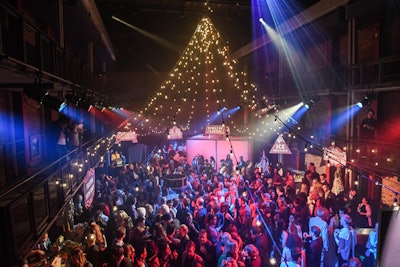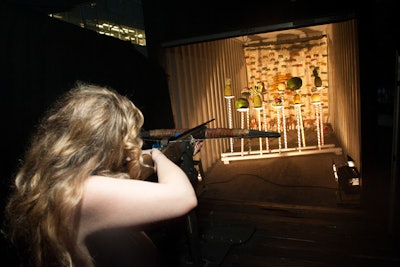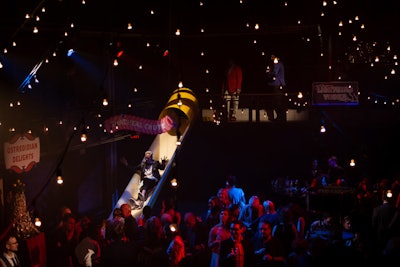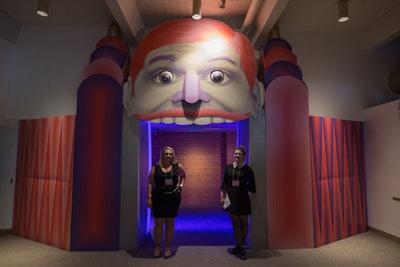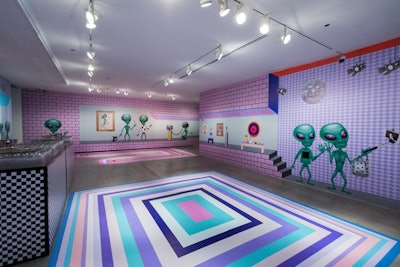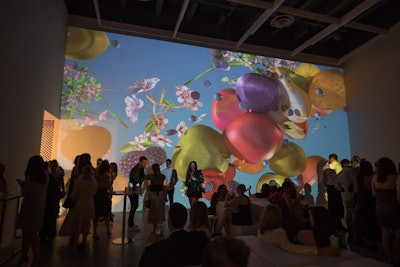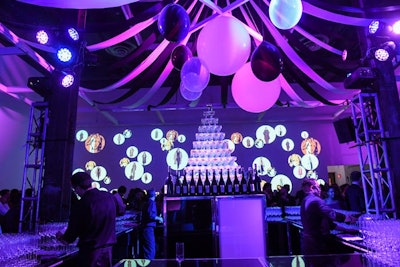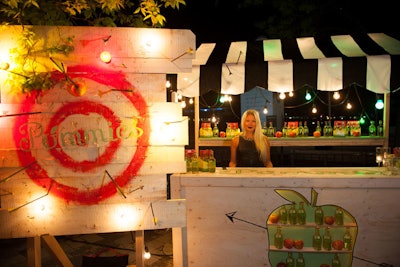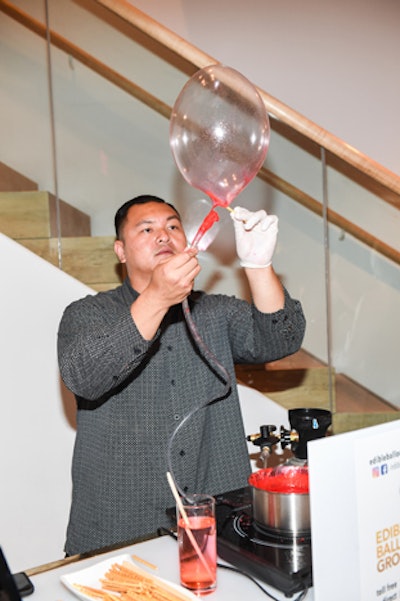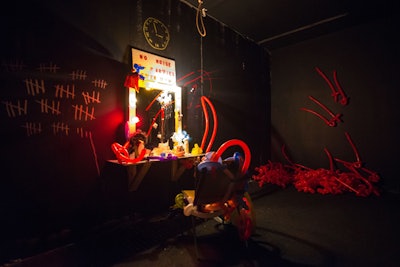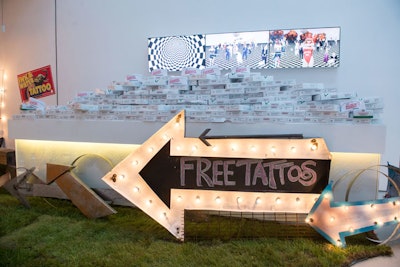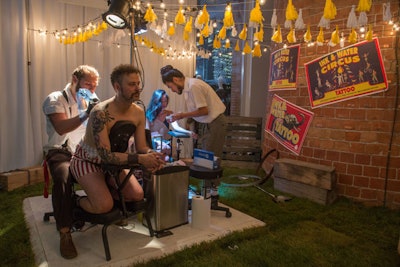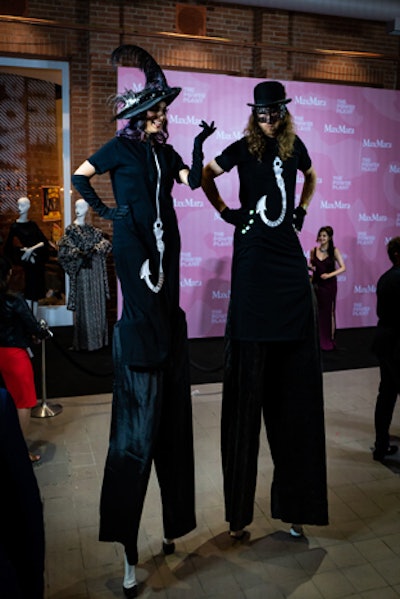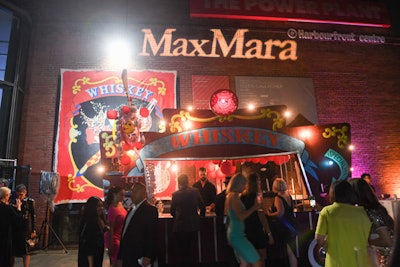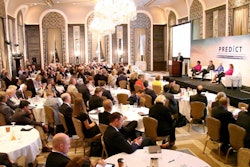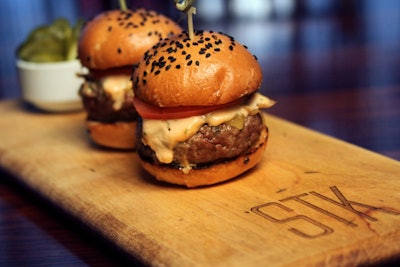

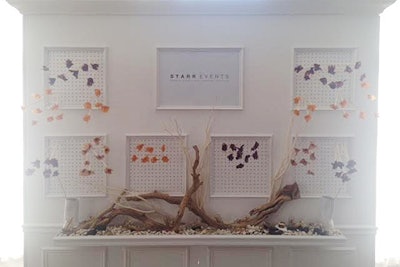

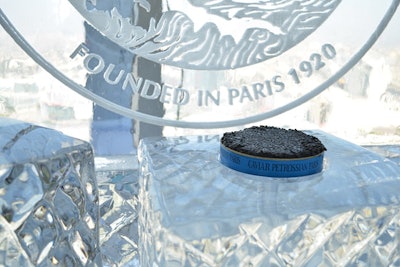

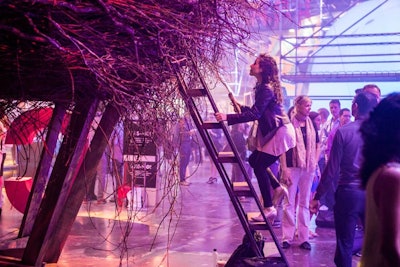
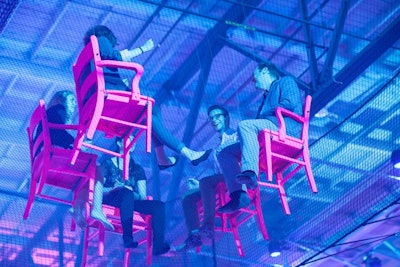
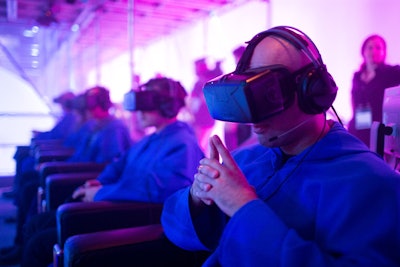

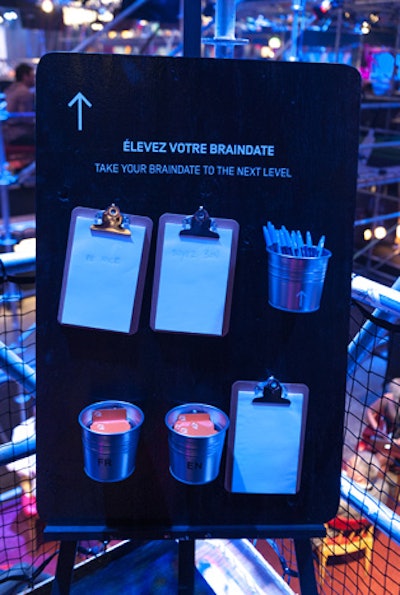
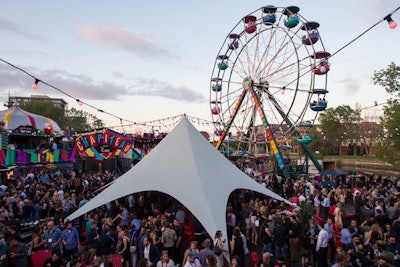
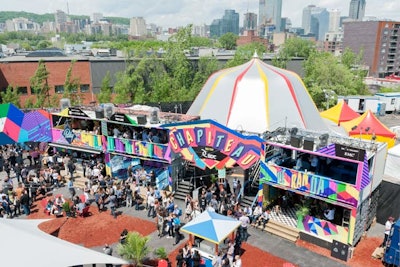



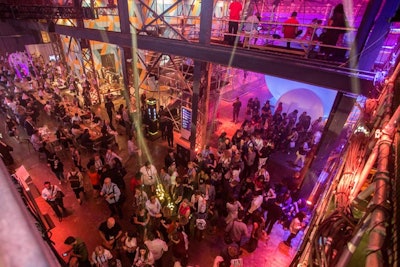
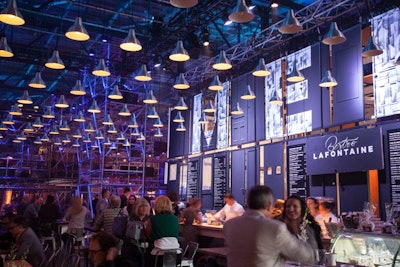




Kanye West's highly anticipated Yeezy Season 3 show-cum-album-release extravaganza lived up to all its hype—if not for anything more than the sheer size and scope of production. Held February 11 at Madison Square Garden, the show was attended by nearly 20,000 people (a mixture of V.I.P.s, media, and consumers who purchased tickets) and lasted some three hours. Guests arrived at the sports arena to find a dark space where a massive rock-like edifice shrouded in cloth stood in the center. The show was also streamed via Tidal.
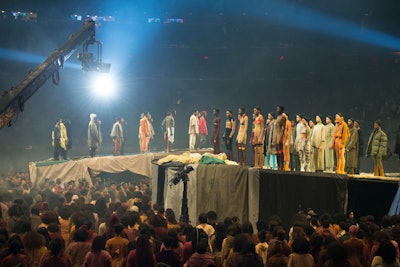
Some 1,200 models—sans the supermodels who appeared in the show—had to stand still for more than 90 minutes while West played his new album in its entirety and entertained the masses with his quips and one-liners. The models were also given a list of 38 rules to which they had to adhere, including "no whispering," "no sexy posing,” and "do not act cool."
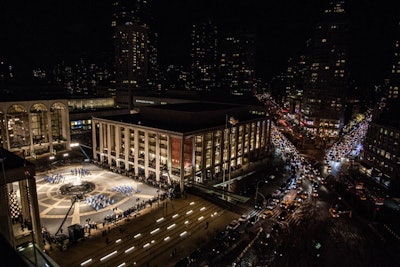
On the coldest night in more than 20 years in New York City, Moncler Grenoble staged its Fall 2016 presentation at Lincoln Center—outdoors. The landmark venue's iconic plaza was cordoned off for the occasion, an event once again produced by Villa Eugenie.
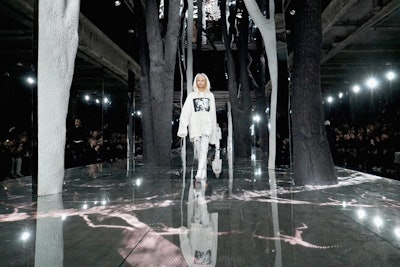
For Rihanna's debut Fenty Puma runway show, held February 12 at 23 Wall Street, production company Prodject commandeered about 35,000 square feet of space in the financial district for a distinctly unique five-day build. Only the video floor portion of the runway was raised, covered by about 200 pieces of custom mirror. Models first walked on the runway, then around the perimeter of the space on the same level as the first row of seats, bringing the clothing closer to the guests.

"The mirror allowed the collection to be viewed from multiple angles in an exciting way," said Prodject founder and president Keith Baptista. "Since the audience was sat on risers around the set in a theater-style setting, each guests saw the collection in a completely unique way."
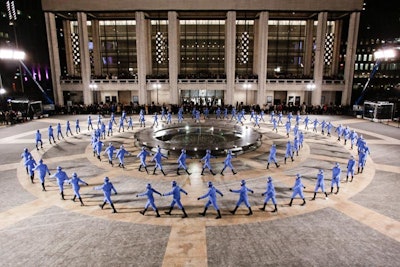
Despite city warnings to "remain indoors," crowds came out for the February 12 show, enduring the 20-minute presentation of 80 athletes dressed in uniforms of blue ski suits performing a synchronized march. More than one editor deadpanned that heating stations, fire pits, and even thermoses of cocoa would have been sincerely appreciated.
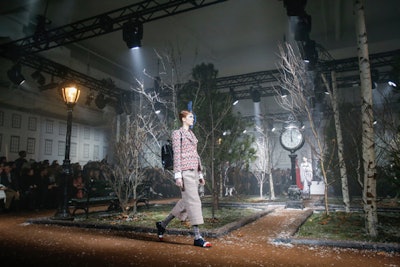
Thom Browne's February 15 show at Skylight Modern featured 41 models, 372 guests, and a set meant to evoke Washington Square circa the Great Depression. Produced by Villa Eugenie, the city square was outlined in scrim drawings of what appeared to be 19th-century residences. The images bordered a dirt walkway around the perimeter of a small park.

Tommy Hilfiger's February 15 show at the Park Avenue Armory was produced by KCD and boasted a near-lifesize Randall Peacock-designed ship, dubbed the T.H. Atlantic. The ship boasted two main cabins, steam stacks, operational architectural lighting fixtures, branded buoys, piles of antique luggage, and an overall dimension of 130 by 40 feet.
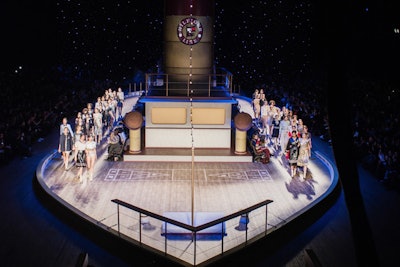
The ship was made of scenic lumber cladding a steel frame structure. The actual hull was treated canvas stretched over a lumber frame to create curvature and maintain lightness for transport. Construction was done off site; the set was then deconstructed and rebuilt on site over four days (and removed in about five hours). Some 60 guests sat on the boat itself, while in total 900 attendees sat for the show.
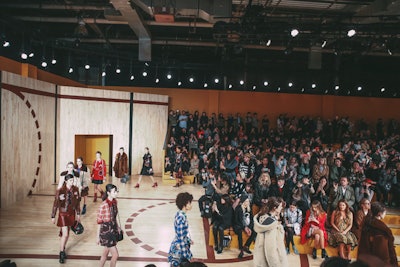
Stuart Vevers's sophomore runway show for Coach had the leather goods giant and show producer KCD taking over Pier 76, the old equestrian stables of the New York Police Department. The custom-built set sat 600 and was modeled as a basketball court with 7,000 square feet of genuine maple hardwood flooring (much of it repurposed) applied with custom graphics. Risers were painted and clad in maple as well with custom faux leather cushions fashioned to resemble a basketball's texture. Almost all of the services, including heating, had to be brought in. The install took two weeks to complete and included a considerable amount of cleaning.
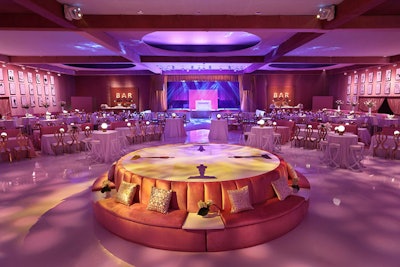
Academy governor Jeffrey Kurland worked with longtime producer Cheryl Cecchetto and Sequoia Productions to produce and design the Governors Ball, which drew 1,500 invited guests to a room that was decorated in a blush-colored palette.
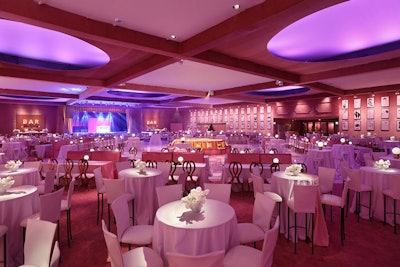
Having moved years ago from a seated-dinner format, the ball once again had a menu from chef Wolfgang Puck of more than 50 dishes, including hors d’oeuvres and small-plate passed entrées. Among the many options were sriracha-candied macadamia nuts; braised short rib with cauliflower puree and golden raisin puffed Thai rice; white grape almond gazpacho; rye berry risotto with peas and asparagus; and poke, stone crab, made-to-order sushi, and other raw bar items served atop illuminated ice blocks. Keeping with Puck’s annual offerings, some of the menu items were presented in the shape of Oscar statuettes, such as smoked-salmon Oscars, and 14-karat-gold chocolate Oscars for dessert. Ball chair Jeffrey Kurland, who is a costume designer, designed the staff uniforms; the event had an army of more than 900 event staff.

Heavy white draping marked the walkway within the party; simple lightbulb fixtures hung overhead.
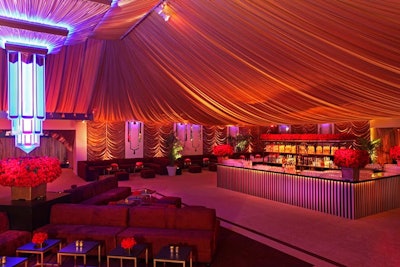

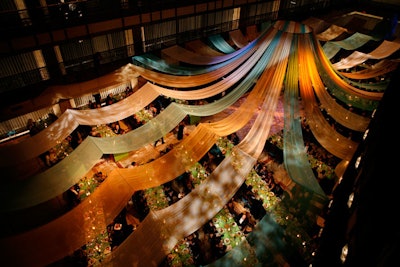
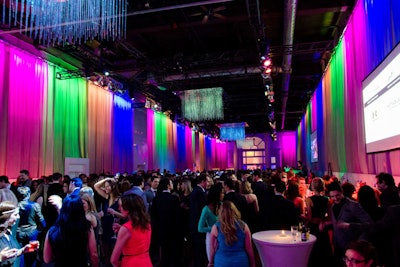
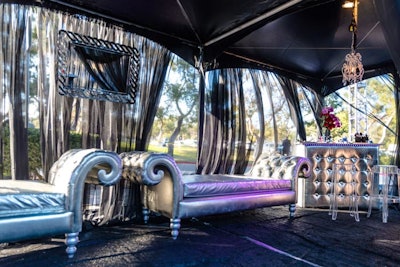
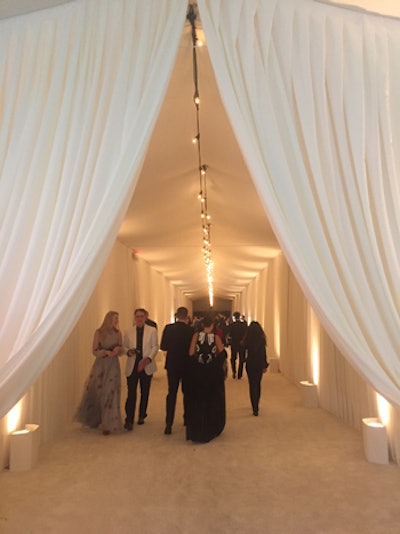
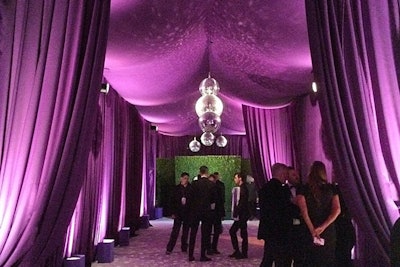
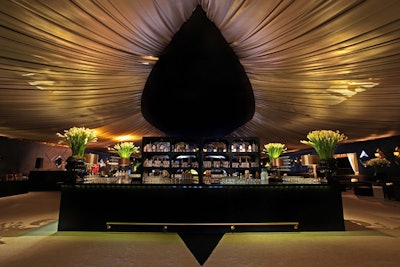
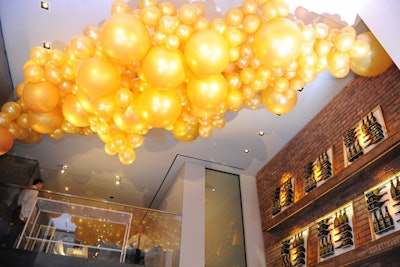
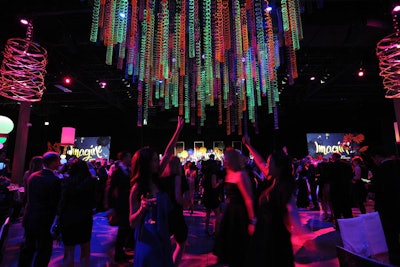
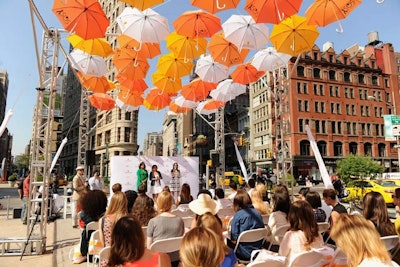

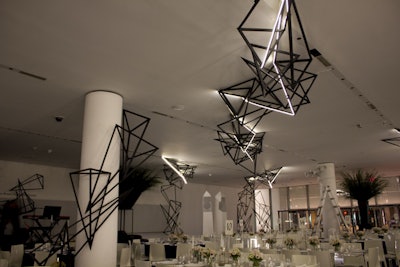

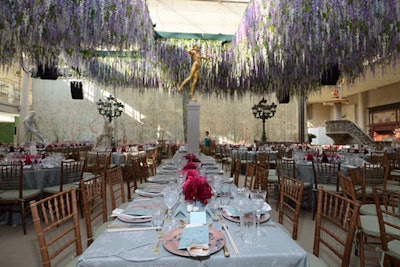
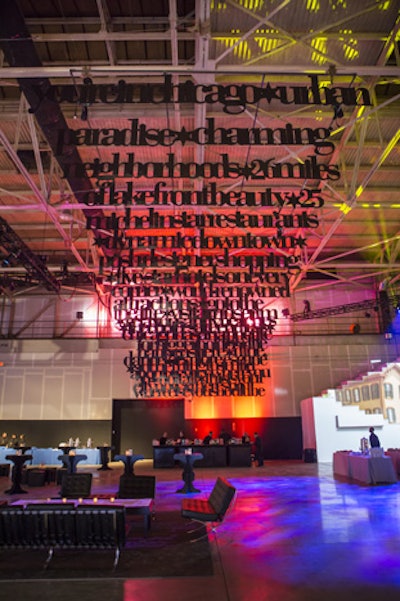

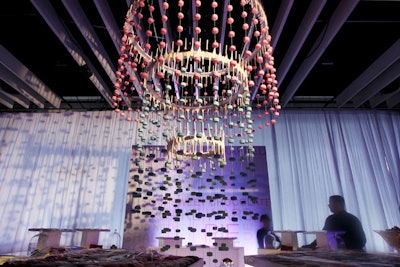





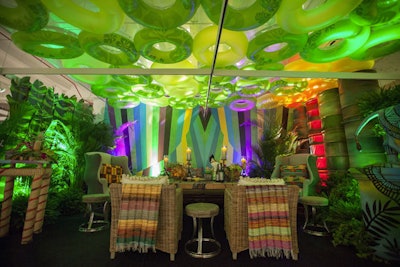

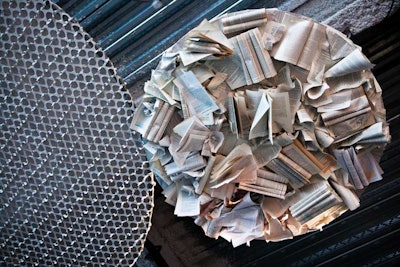
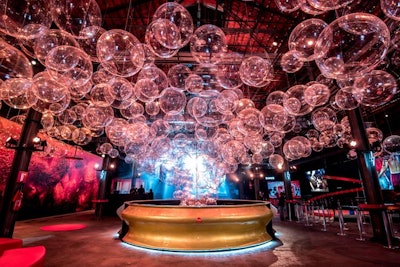
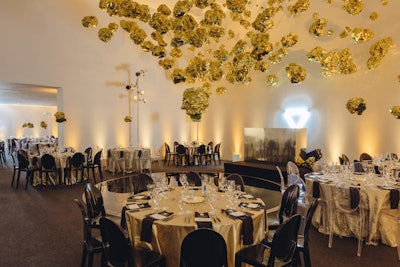

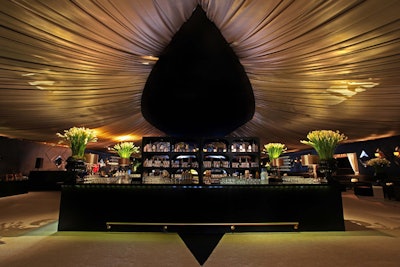



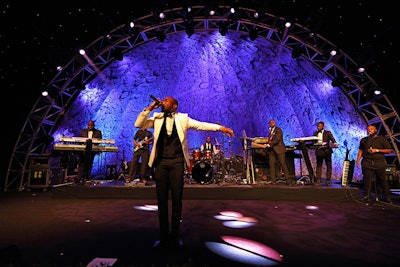
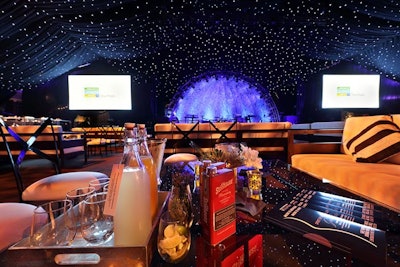
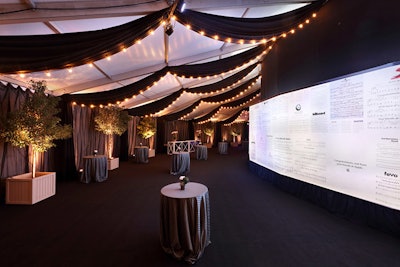
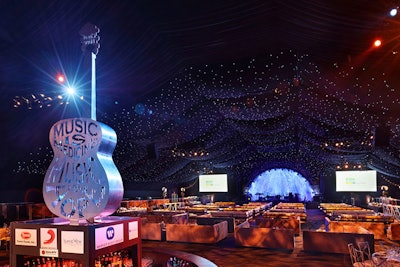
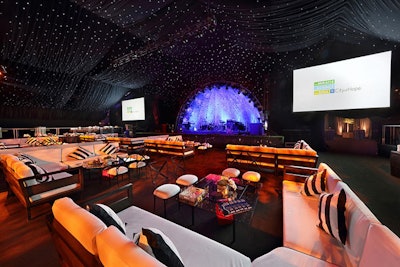
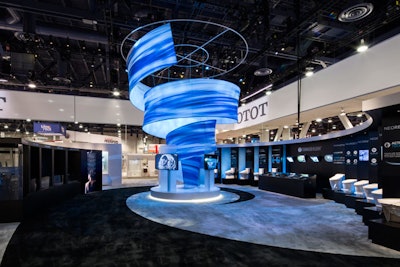
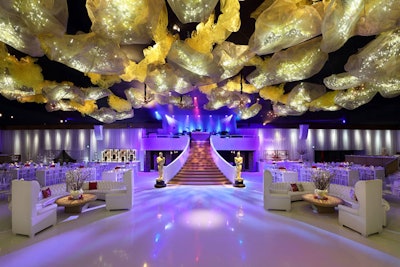
Academy governor Jeffrey Kurland worked with longtime event producer Cheryl Cecchetto and Sequoia Productions to produce and design this year's Governors Ball, which took place at the Ray Dolby Ballroom of the Dolby Theatre immediately following the ceremony. The night drew 1,500 Oscar winners and nominees, show presenters, and other A-list talent, and was decorated with a “magical transformation” theme, with red, gold, and white colors. Starburst light fixtures and irregular-shaped decor pieces, illuminated with white lights, comprised a cloud-like ceiling installation that served as the evening’s focal point.
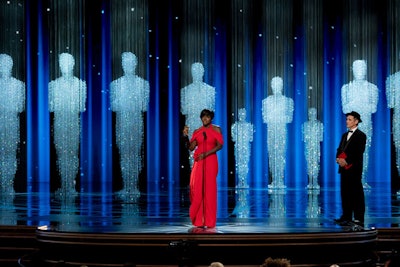
Returning sponsor Swarovski partnered with production designer Derek McLane to illuminate the stage; this year's design—the brand's 10th collaboration with the show—featured more than 300,000 crystals, the largest number ever used for the ceremony. Eleven Oscar-shaped figures featuring nearly 150,000 crystals served as a focal point.
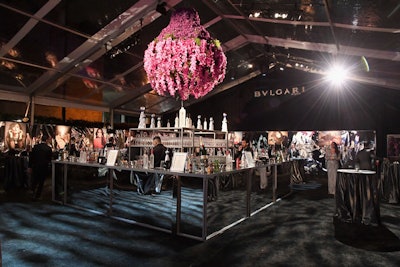
The 25th annual Elton John AIDS Foundation Academy Awards viewing party, hosted by the singer and David Furnish, took over West Hollywood Park on February 26 with sponsorship from Bulgari, Neuro Drinks, and Diana Jenkins. The evening raised a record-breaking $7 million and was designed by longtime collaborator Virginia Fout of V Productions.
Alexander Gilkes of Paddle8 conducted a live auction, which featured items such as Bulgari's Diva’s Dream Necklace in white gold with pavé diamonds, a five-day vacation at Steven Tyler’s Hawaiian retreat, and two tickets to the Vanity Fair Oscar Party. Over the past 25 years, the annual event has raised more than $56 million to help people at risk for or living with H.I.V./AIDS; the Elton John AIDS Foundation has raised a total of $350 million since 1992.
Longtime vendor Crumble Catering worked with chef Gordon Ramsey to prepare some 1,000 five-course meals for the event. Menu-planning started a full year in advance, and 150 servers and bartenders and 70 kitchen staffers worked the evening. Moët Hennessy provided champagne, Domaine Bertaud Belieu provided wines, and Chopin Vodka and Clase Azul Tequila provided spirits.
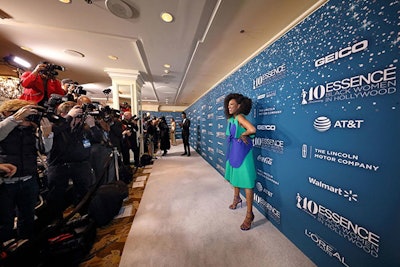
Another new aspect to the Essence awards was a Facebook Live stream of the red carpet, as well as a new Snapchat Discover partnership where fans could follow along live. Agenc and the Essence event team created a teal-colored step-and-repeat adorned with stars, which added a glamorous effect to the arrivals area.
“[We wanted to] put women first throughout every element,” said Montgomery. “Yes, the event and the brand are built on celebrating women, but my goal was to also focus on the production elements being female-first as well—kind of like Beyoncé's all-girl band."
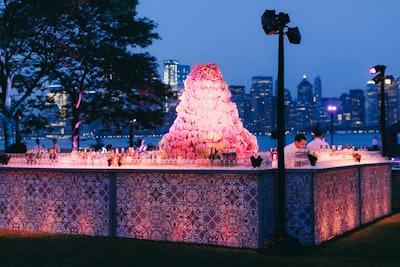


During a ballet performance, some 10,000 attendees gathered around the installation.
